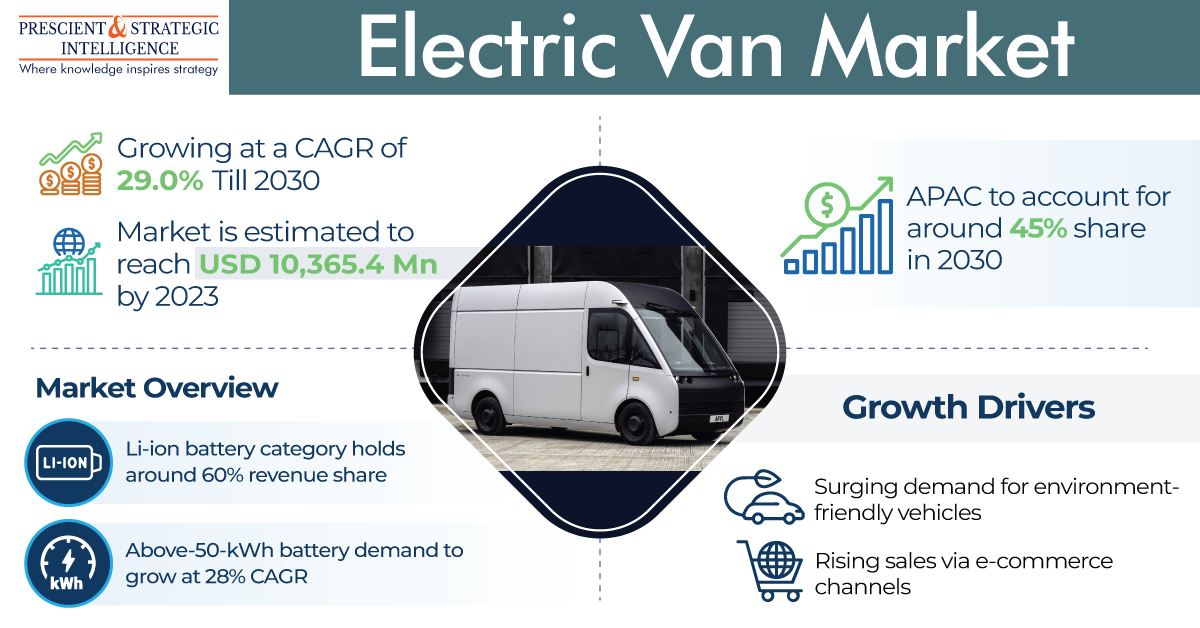While electric cars are commonly in the attention, e-vans are not to be ignored. From small industries to movers, vans keep life moving. Manufacturers are progressively putting focus on emerging electric vans so our roads can be silent and cleaner in the future.
The global electric van market is witnessing growth and is projected to reach USD 60,963.1 million by 2030.
Benefits of Electric Vans
Low Running Prices
One of the major benefits of e-vans is their low every day running prices. A diesel van running 20,000 miles a year will rate about £3,000 a year on average in fuel, but an e-van will charge just £500 a year to cover a similar distance. Saving £2,500 a year soon makes up for any list cost difference between diesel and electric vans and enhances up to a significant sum over the lifetime of the van.
To download free sample pages of this report@ https://www.psmarketresearch.com/market-analysis/electric-van-market
Ecologically Friendly
E-vans are far friendlier to the atmosphere than traditional petrol or diesel vans, releasing fewer gases and contaminants into the environment than diesel and petrol vans, such as the manufacturing of the van and the generation of energy to power them. This not only decreases the contribution towards climate change but aids in reducing air contamination in our cities and towns.
Refined Driving Experience
An additional plus for electric vans is the swift silence of the e-motor, letting you cruise with ease without the sound and rattle of old-style combustion engines. Also, a low noise level and the near-prompt torque of the motor permit smooth acceleration, making it simple to move around town. With the batteries stored in the underbody of the van, not only do they not take up any space in the cargo area but they aid less the center of gravity adding to remove pitch and roll under heavy braking or acceleration.
Low Maintenance Costs
The common concern about electric vans is that it will cost an arm and a leg to maintain them because of their modern equipment, but are they more expensive for maintenance? Indeed, maintenance costs will be significantly reduced due to the relative shortage of moving parts and a regenerative braking system that reduces brake wear and tear.
Lithium-Ion Batteries Hold Major Share
In recent years, the Li-ion battery category has dominated the market, with a revenue share of approximately 60%, and it is set to experience a CAGR of approximately 28.4% in the years to come. Such batteries can keep a significant size of energy in a comparatively compact and lightweight package, thus letting EVs have longer driving ranges without growing their weight or size.
Asia-Pacific Leads Market
The Asia-Pacific region leads the industry with an income share of 45%, and the region is also projected to advance at a substantial CAGR, of 28.8%, during the projection period. This is because of the rising populace and quick urbanization in numerous regional nations, mainly China and India. China is the major maker of such automobiles, with several businesses concentrating on improvements in them to bring down their buying, working, and maintenance prices.
